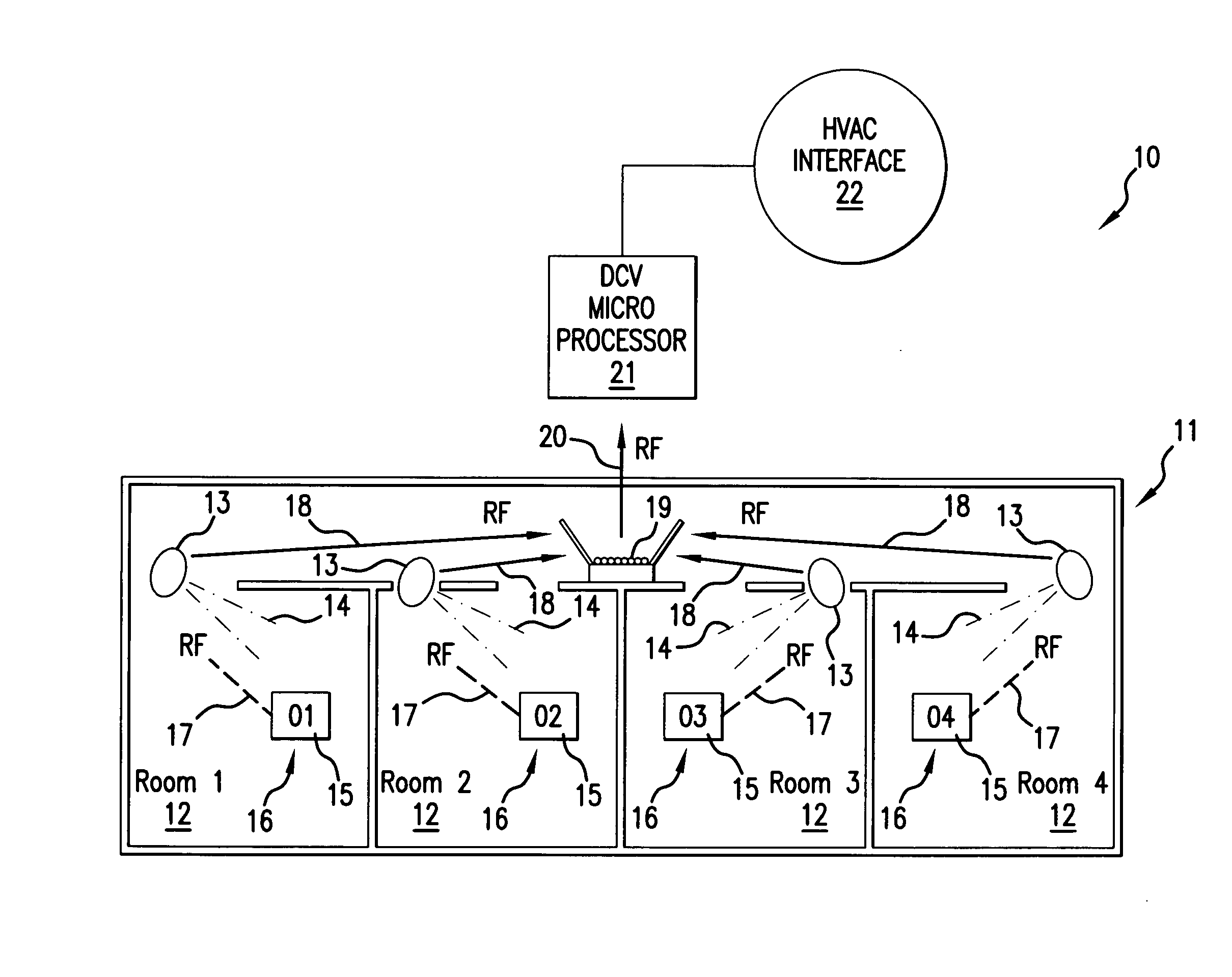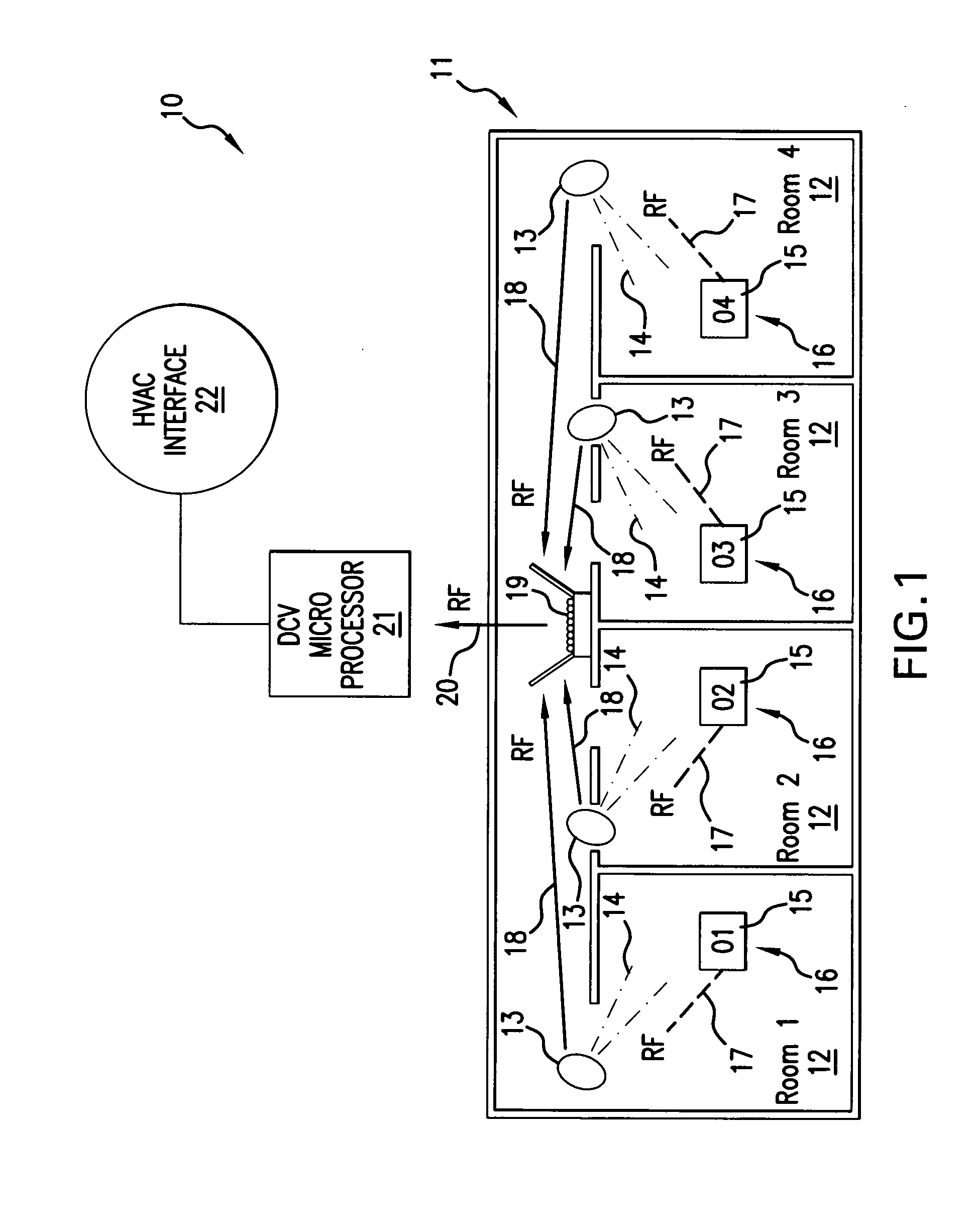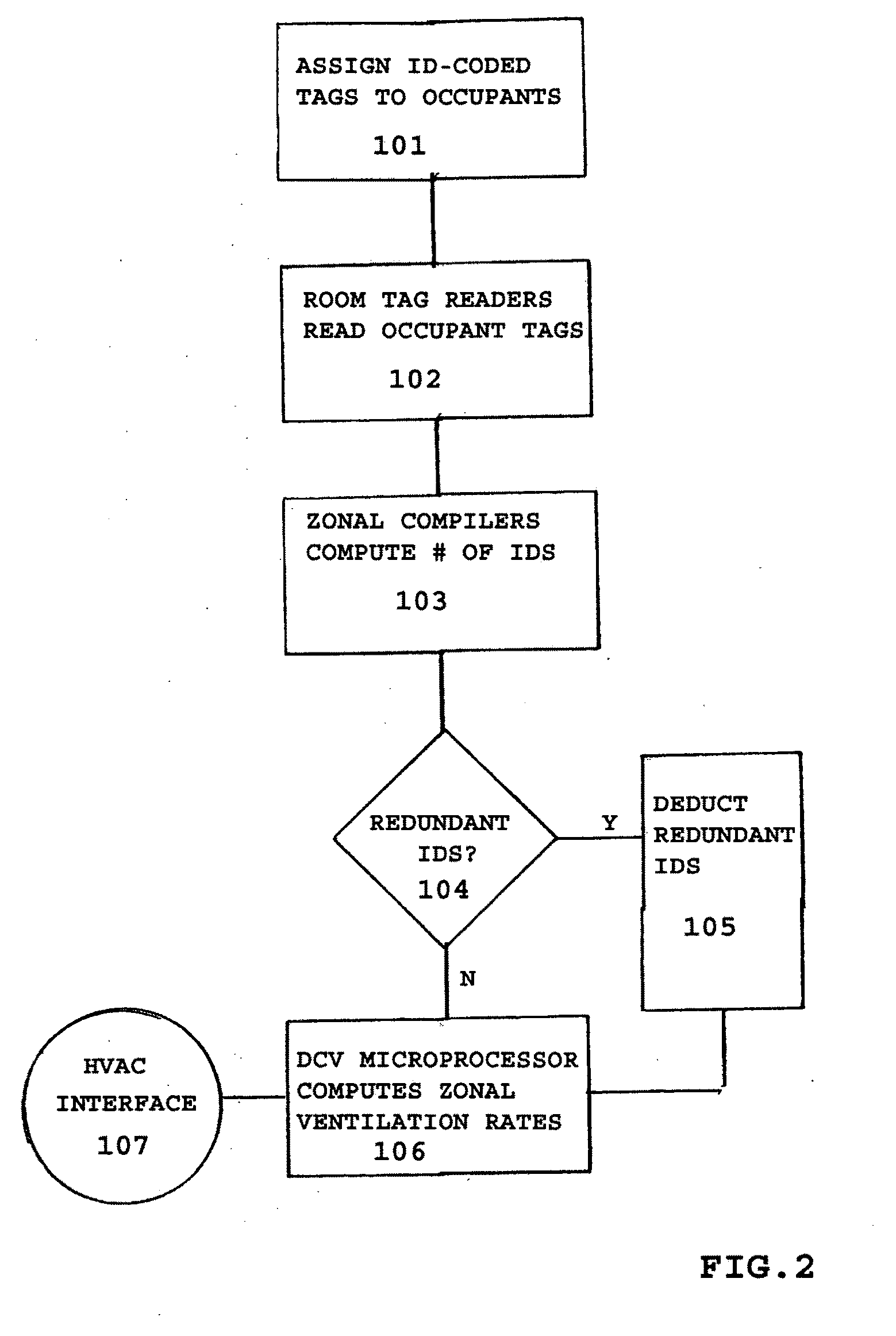Occupancy-based demand controlled ventilation system
a demand-controlled ventilation and occupancy-based technology, applied in ventilation systems, heating types, static/dynamic balance measurement, etc., can solve the problems of inability to automatically adjust ventilation rates based on occupancy, inability to meet the requirements of occupancy-based demand-controlled ventilation, and inability to meet occupancy-based demand-controlled ventilation. , to achieve the effect of significant energy efficiencies, low cost and simple implementation
- Summary
- Abstract
- Description
- Claims
- Application Information
AI Technical Summary
Benefits of technology
Problems solved by technology
Method used
Image
Examples
Embodiment Construction
[0034]FIG. 1 depicts a schematic apparatus configuration of the first preferred embodiment of the present invention 10, which uses passive tags. For illustrative purposes, this figure focuses on one ventilation zone 11 of a building that has multiple ventilation zones. The same basic apparatus configuration would be replicated in the other ventilation zones of the building. The exemplary ventilation zone 11 comprises four rooms 12, which are labeled Rooms 1-4. Obviously, depending on the floor plan and ventilation system of the building, each ventilation zone 11 can have more or fewer rooms 12 than are depicted in this figure. Hence, the number of rooms 12 indicated here is for illustrative purposes only.
[0035]In each room 12, there are one or more detectors that are tag readers 13. Preferably, there is one tag reader 13 per room 12, but multiple tag readers 13 may be required for rooms that are very large and / or have very complex configurations. In the preferred embodiment 10, the ...
PUM
 Login to View More
Login to View More Abstract
Description
Claims
Application Information
 Login to View More
Login to View More - R&D
- Intellectual Property
- Life Sciences
- Materials
- Tech Scout
- Unparalleled Data Quality
- Higher Quality Content
- 60% Fewer Hallucinations
Browse by: Latest US Patents, China's latest patents, Technical Efficacy Thesaurus, Application Domain, Technology Topic, Popular Technical Reports.
© 2025 PatSnap. All rights reserved.Legal|Privacy policy|Modern Slavery Act Transparency Statement|Sitemap|About US| Contact US: help@patsnap.com



